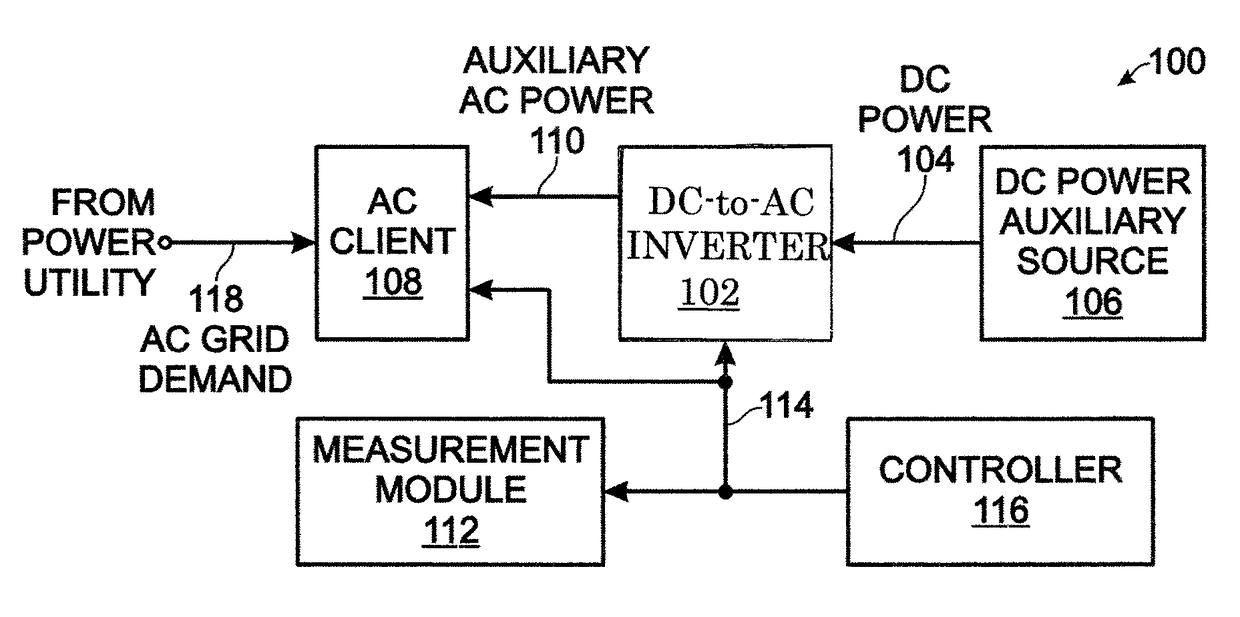System and method for managing AC power using auxiliary DC-to-AC inversion
a technology of auxiliary dc and ac, applied in the direction of ac network voltage adjustment, information technology support system, climate sustainability, etc., can solve the problems of wasting dc energy supplied, power inverter may spend a significant amount of time at low efficiency power setting, and low efficiency at high power setting, etc., to achieve excellent power inverter efficiency and accurate control of peak demand.
- Summary
- Abstract
- Description
- Claims
- Application Information
AI Technical Summary
Benefits of technology
Problems solved by technology
Method used
Image
Examples
Embodiment Construction
[0020]FIG. 1 is a schematic block diagram representing a system for managing demand for an alternating current (AC) client using direct current (DC)-to-AC power inversion as an auxiliary source of power. The system 100 comprises a DC-to-AC inverter 102 having an input on line 104 connected to a DC power auxiliary source 106. A battery is one example of a DC power auxiliary source. The inverter 102 has selectable inversion power output levels connected to an AC client 108 on line 110 to supply auxiliary power for a portion of a fluctuating AC grid demand of the client. The AC grid demand is monitored on line 118.
[0021]A measurement module 112 has an interface connected to the DC-to-AC inverter on line 114. The measurement module 112 averages the AC grid demand supplied on line 118. In each of a series of periodic time intervals, the measurement module 112 compares a current AC grid demand average in a current time interval to a demand goal. More explicitly, the current AC grid demand...
PUM
 Login to View More
Login to View More Abstract
Description
Claims
Application Information
 Login to View More
Login to View More - R&D
- Intellectual Property
- Life Sciences
- Materials
- Tech Scout
- Unparalleled Data Quality
- Higher Quality Content
- 60% Fewer Hallucinations
Browse by: Latest US Patents, China's latest patents, Technical Efficacy Thesaurus, Application Domain, Technology Topic, Popular Technical Reports.
© 2025 PatSnap. All rights reserved.Legal|Privacy policy|Modern Slavery Act Transparency Statement|Sitemap|About US| Contact US: help@patsnap.com



